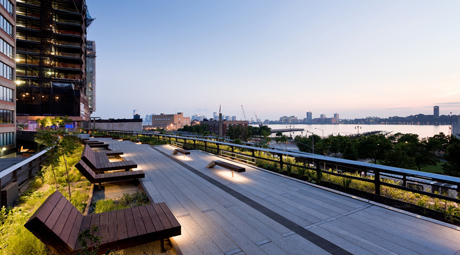Contemporary American cities are at a defining moment in many ways. Traditional, reliable sources of revenue have been reduced. Reductions in federal and state spending have added to the burden by cutting or removing direct funding for city programs.
We have dealt with budget cuts in San Jose and Santa Clara County for years and the full impact has yet to be felt. Parks are an integral element in our everyday lives.
As one of the largest city departments, the department of Parks Recreation and Neighborhood Services (PRNS) has had to react quickly and significantly in recent years to maintain its 200-plus neighborhood parks—with more than 200 playgrounds, 94 sports fields, 80 tennis courts, 54 miles of trail, 6 dog parks, etc.—while receiving much less money and fewer staffers.
This same situation is occurring across the United States. Some cities have not quite felt the pinch yet, but shortages in money and resources are a fairly universal experience now for municipalities—and the budget situation isn’t changing any time soon.
But I am optimistic about the future of San Jose’s parks system, and there are some very specific reasons why.
The first reason: I believe the people of San Jose will do whatever it takes to maintain a world-class system of parks and trails. They will provide financial and volunteer support and engage in creative private-public partnerships that will sustain the kind of parks we need.
The second reason: I have seen what other cities have done and it creates a clear vision of what we could do. The “High Line” in New York City is a spectacular achievement, a park created along a mile-plus of abandoned railroad tracks. Once considered an eyesore, it has been converted into a park that has generated billions of dollars of commerce along its route. It is popular with New Yorkers and is a major tourist draw.
Millennium Park in Chicago is another example of what is possible. Now one of Chicago’s biggest tourist draws, but also popular with local residents, Millennium Park was built on an ugly abandoned railroad yard and was created almost entirely with private funding.
One of my favorite stories of transition is Madison Square Park, which had become overrun by drug-dealers and drug addicts. The neighborhood formed a nonprofit organization, a conservancy, and rebuilt this into an amazing, living park.
Looking forward, I envision a variety of solutions for San Jose’s Parks. Residents will take on custodianship of neighborhood parks so that they can flourish. Larger parks, which I prefer to call Signature Parks (i.e., San Jose Municipal Rose Garden, St. James Park, Almaden Lake, etc.) will likely form conservancies or, at the very least, active support groups that will provide the high level of support needed.
We are limited only by our collective imagination.
James P. Reber is the executive director of San Jose Parks Foundation, a veteran nonprofit entrepreneur and experienced special event planner and producer. He can be reached at
ja***@sa**********.org
or 408.893.PARK.

